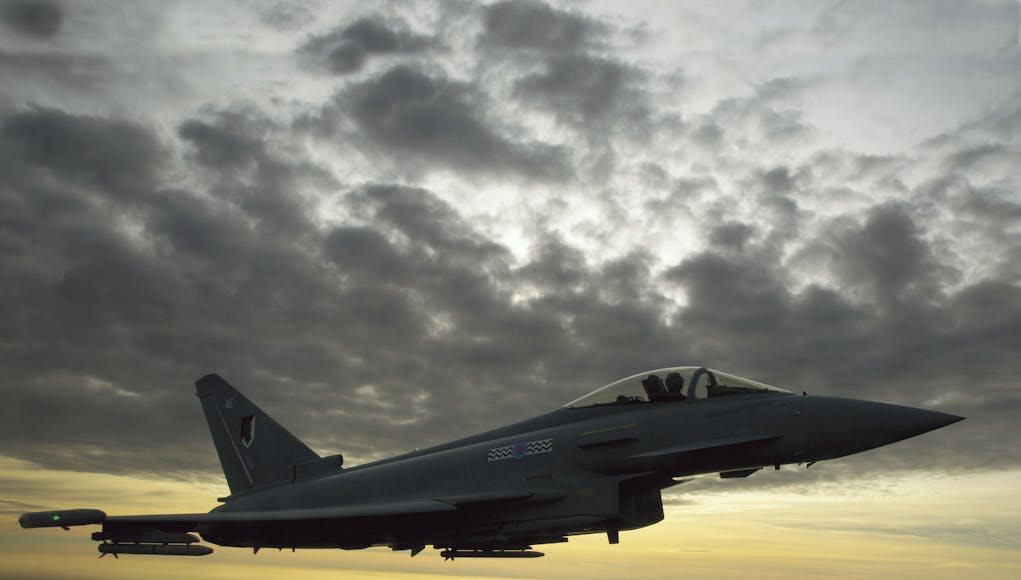Typhoon jets attacked two positions in Raqqa, whilst Tornados hit an armed truck and terrorists on foot in and around Tal Afar.
A Typhoon flight used Paveway IVs to destroy two defensive positions in Raqqa, from which Daesh extremists were firing on the Syrian Democratic Forces.
Tornados bombed two groups of terrorists spotted on foot to the north-east of Tal Afar, while a mixed flight used a Brimstone to destroy an armed truck hidden under a building’s overhang on the western edge of the city. The following day, Typhoons and Tornados struck a further four positions in Raqqa with Paveways, including a sniper and a machine-gun team.
Typhoons and Tornados were also very busy around Tal Afar: Paveway IVs were used to target one large and two small buildings comprising a truck-bomb factory, and five other positions from which terrorists armed with suicide vests, rocket-propelled grenades, a mortar and a heavy machine-gun were operating.
In addition, two Brimstone missiles were fired successfully at a truck-bomb, and a mechanical excavator used to construct defensive positions.
What is the status of the air campaign?
The UK has been the second largest contributor to the air campaign in Iraq and Syria. UK aircraft have flown over 3,000 missions as part of Operation Shader, and as of the beginning of November 2016 had conducted 1,115 airstrikes against ISIS targets in Iraq and Syria (1,048 and 67 respectively).
In July 2016 the MoD acknowledged that “the RAF has not operated at this sustained operational tempo in a single theatre of conflict for a quarter of a century”.
The Government has consistently maintained that no civilian casualties in Iraq or Syria, to date, have resulted from UK air strikes however it adds “no military operations come without risk, particularly in dense urban environments and against such inhuman Daesh tactics, the RAF continues to take all steps necessary to minimise civilian casualties.”
In December 2016, it was reported that the Royal Air Force is operating at its most intense for 25 years in a single theatre of operation which far outstripped the UK involvement in Iraq and Afghanistan – RAF jets have dropped 11 times more bombs (1,276 strikes) on Syria and Iraq in the preceding 12 months than they had in the busiest year of action in Afghanistan a decade previously.
The cost of the operations against Islamic State and other details of the campaign were revealed in a briefing paper. In March 2015 the MoD confirmed that the net additional costs of the military air operation would be met from the Treasury Special Reserve; while the costs of training and equipping the Iraqi and Kurdish security forces, and the provision of key enablers, would be met from the MOD’s Deployed Military Activity Pool (DMAP).
In answer to a parliamentary question in September 2016 the MoD set the costs of the operation, between August 2014 and the 31st of March 2016, at £265 million (£45 million in the 2014-15 financial year, and £220 million in the 2015-16 financial year).














I hope there are Apaches at Akrotiri. If a british pilot goes down over Syria – gunships would be essential for a rescue operation. They’ve done good work, but it’s time for them to come home.
A good idea the military would have suggested but the beam counters at the MOD shut down as too expensive.